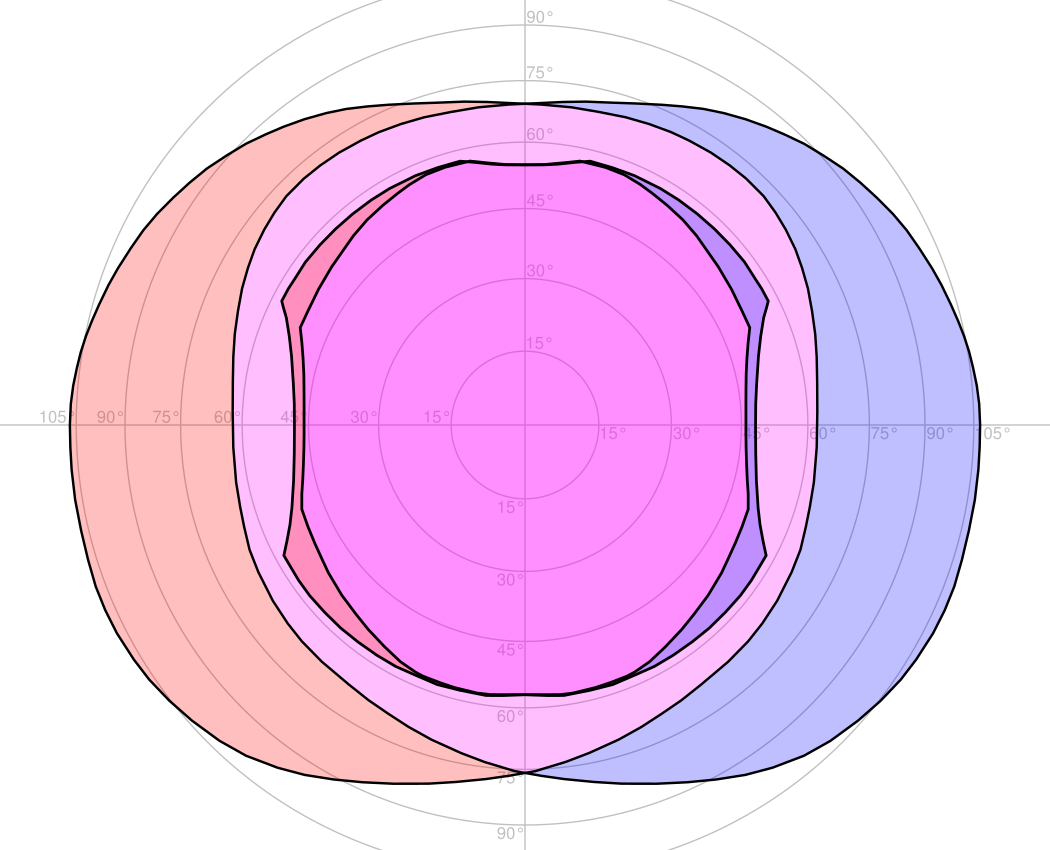Yeah. There is always a balance of tradeoffs to make, and when Oculus’ designers chose their’s for the Rift CV1, they picked one between FOV and resolution, that happened to give the CV1 a pretty substantial resolution advantage over the contemporary HTC Vive, BUT this came at a, in my opinion, unacceptable commensurate cost in field of view; Especially in the binocular overlap sector, where degrees of angle were taken from, in order to mitigate the combined total FOV loss. -Where the Vive was like looking through WC paper rolls, the CV1 was like looking through square section tubes which fit entirely inside those rolls, and the edges of that square view were inside the FOV given by the lens - focussed at its virtual focal distance, rather than the near-eye lens edges being what cut off the visible FOV, giving the wearer this unpleasant, cramped, boxed-in feeling (many didn’t notice this as much, because due to face shape, and the lack of eye-relief adjustment, they didn’t get close enough to the lenses, which reduced their practical FOV even further, but at least prevented them from seeing the sharp edges).
Interestingly, the square-ish per-eye views did result in distinct corners, between which an unquestionable (…and much bandied-about…) “diagonal”, which due to the square shape was noteably larger than the horizontal FOV, could be measured… :7
(Another subjective effect, which has come back up here, recently, in comparisons between Pimax wide FOV headsets and other, smaller FOV ones, was that people’s taking relative, rather than absolute impressions: From everything I could tell, degree for degree, the falloff in focus away from the centre, was about the same between the Rift CV1, and the original Vive, but some users were swearing blind that the former was infinitely better in that area… and well, kinda…: almost 100 % of its view was sharp, but that’s because it didn’t show, at all, the further 20% of FOV the Vive did, which would have been just as out of focus in the CV1 as they were in the Vive; 35 degrees out, both devices were about equally blurry, but people didn’t take their impressions by degree, but by percentage, even though these were percentages of two very different sizes.)
No, thank you; I want a realistic view – not zoomed in, not zoomed out, not bulging in the middle (…which something you wrote a bit farther up sounded alarmingly like – things like that means incorrect distortion correction and/or pupil swim (some pupil swim it to be expected with conventional lenses, unless one have eyetracking adjusting the correction profile on the fly)).
If I hold my arm out so that my hand appears 50° out to my side in the real world, it should appear 50° out in the virtual world, too, and appear the same size, or we are fast slipping away from anything you could call VR. Fisheye Quake, anybody? :7 Fisheye Quake
Only time the world should look larger or smaller, is in situations where I play something like an ant, or a giant, or simulating the sight of an animal with side-facing eyes.
Let’s leave things like exaggerated stereo separation to old flatscreen 3D, where they belong.
I guess I’m just jaded to the point of defeatism, but this time around I’m finding myself, rather than calling things out, taking the disparity between advertised and reported FOV with a lazy: “Yeah, sure - of course; What else would you expect, by now?”. 
103° is around where most headsets lie, and what one might have expected to begin with… :7
I speculated once, that maybe Pimax “had to” double down on the old 200° nonsense for the 8k series, once its “nonsense-hood” became irrefutable, or maybe they could be opening themselves up to retroactive demands, but surely they’ll be careful to not put themselves in the same situation again, when people are wary from the outset… 
Anyway – one way I could envision, to get inflated numbers with a tiny kernel of truth to them, is if one screwed the lenses all the way out to the sides, way past the user’s IPD, and software adjusted IPD to account for the mismatch. That would leave you with almost no stereo overlap, and waaaay out of the sweet spot of the lenses, but the edges of the FOV would be out there, at the impressive number.
Dishonest as all hell, of course – the FOV should be measured from the optically optimal point along the axes of the lenses, and nowhere else.

